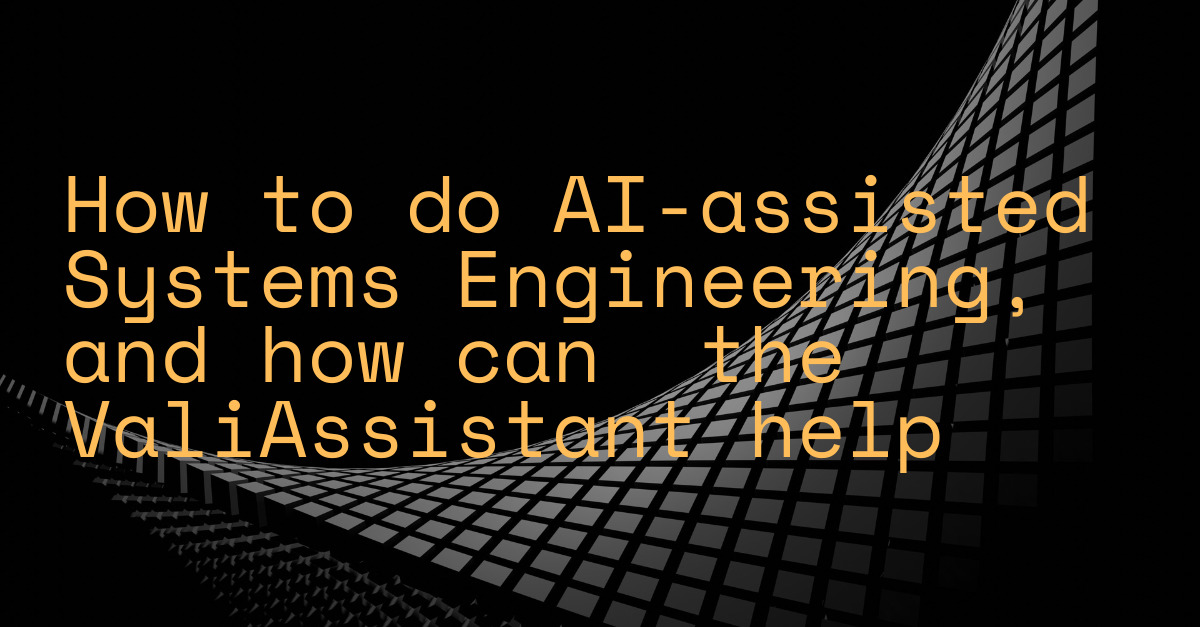
With the rapid advancement of artificial intelligence (AI), integrating AI into systems engineering processes is becoming essential to improve efficiency, accuracy, and decision-making. Valiassistant, Valispace’s AI-powered language model, is a crucial assisted engineering tool in this era. This article outlines a step-by-step guide on how to use Valiassistant.
This feature leverages AI technologies to automate and improve engineering tasks and routines. Valiassistant integrates with OpenAI, helping you in your day-to-day activities within the requirements module. Valiassistant can be used as an “extra pair of hands” to work efficiently, allowing you to be more innovative.
AI can assist you in many different ways, we’ve listed some below:
- Generate Requirements based on the project scope and objectives
- Identify Stakeholders and Requirements
- Create a conceptual design for your system
- Improve your requirements based on requirement writing standards
- Document your specification
- Look for inconsistencies within the specification
- …
Generate Requirements
Valiassistant can generate requirements based on the inputs its provided with. The inputs can be the project scope of the system of interest, stakeholder needs, system requirements, safety requirements, etc.
Let’s look at the video below. We are now starting a new system development and our system of interest is Valicopter which is a new EVTOL to go to market in 2024. Once the mission and business needs are properly outlined in the early design phase, we can use Valiassitant to generate a set of requirements directly within Valispace. These requirements can then be modified or refined according to our current needs.
We can also use Valiassistant to breakdown requirements as you can see below:
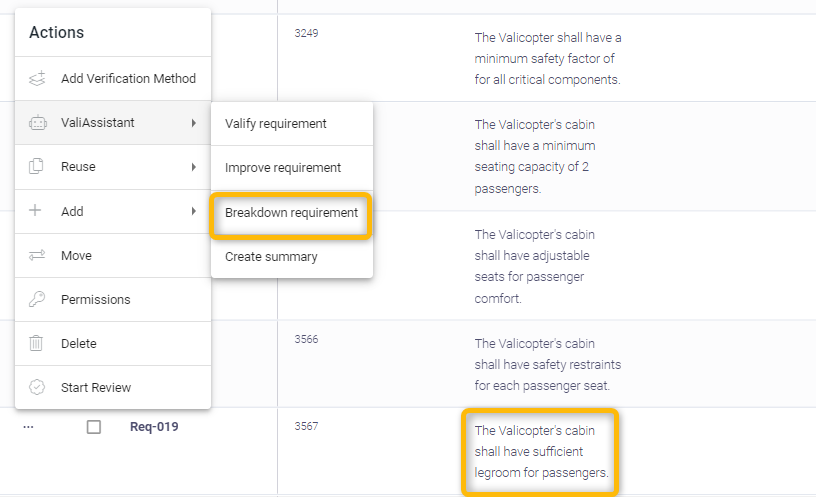
The Breakdown Requirement option generates the parent-child relationships between requirements. Once again, we can select and edit the appropriate child requirements based on our use case. This gives us a head start and makes the work of breaking down requirements much easier. The result of the breakdown for this particular requirement is shown in the image below:
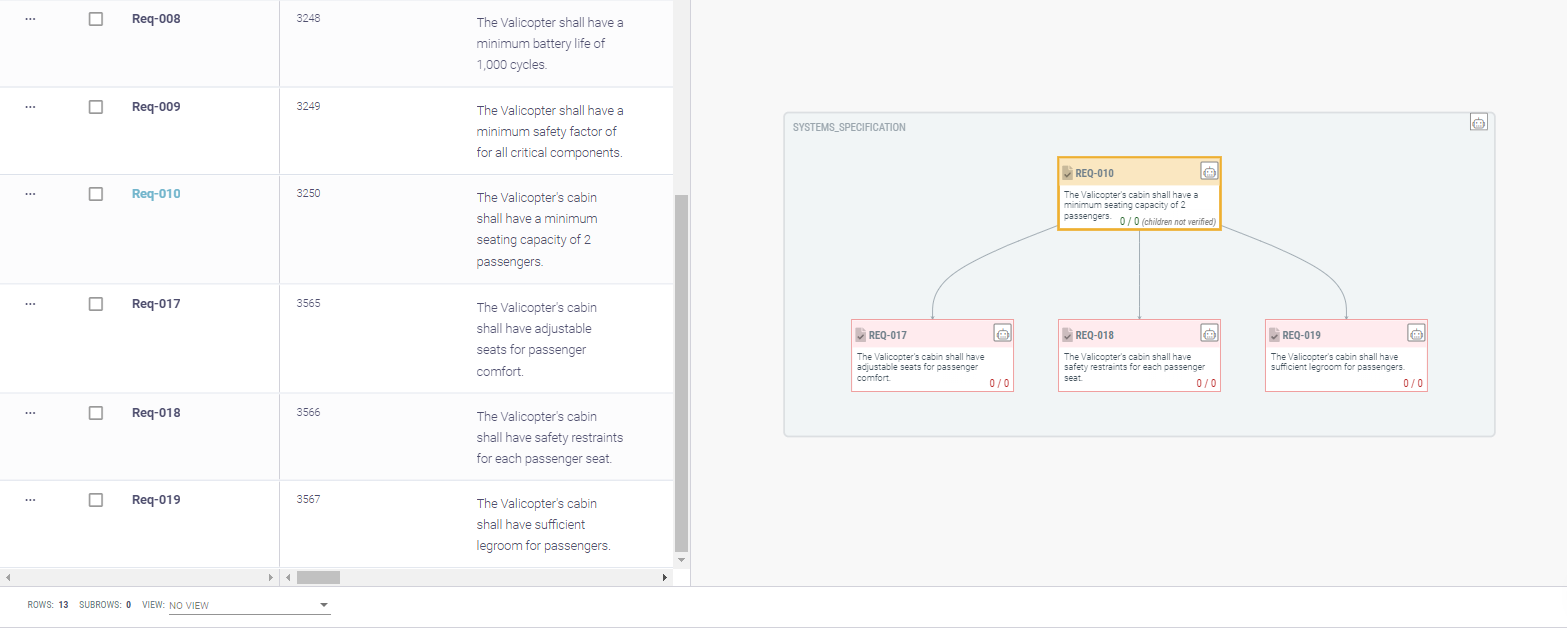
To know more about the concept of breaking down requirements, you can refer to our article “How to breakdown requirements”
Write Better Requirements
One of the challenging tasks in systems engineering is to gather the diverse needs of stakeholders and create clear, concise, and unambiguous requirements. Valiassistant makes this process much easier by automatically suggesting improvements for your requirements as you create them to ensure they are complete, verifiable, consistent, and modifiable.
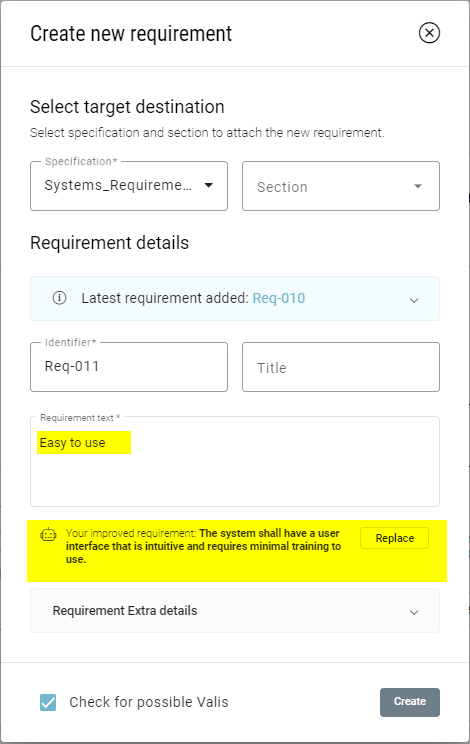
Improve Requirements
During the system engineering process, system engineers elicit the needs with multiple stakeholders. Some of the stakeholders, provide their requirements in different formats such as CSV, XLSX or ReqIF. These requirements can be imported into valispace through the Inbuilt importer. However, the requirements needs to be reviewed and written properly with the industry standards of “Requirements Writing”.
For requirements already populated and the newly imported requirements, or for requirements that are created without the valiassistant suggestion, we can use the “Improve requirements” option within valiassistant. If you are following industry standards when writing your requirements, you should know that Valiassistant can assist you in enhancing the quality of your requirements by ensuring they meet the requirements standards, such as INCOSE or ANSI/IEEE. This can be achieved with just a few clicks, creating clear and unambiguous requirements.
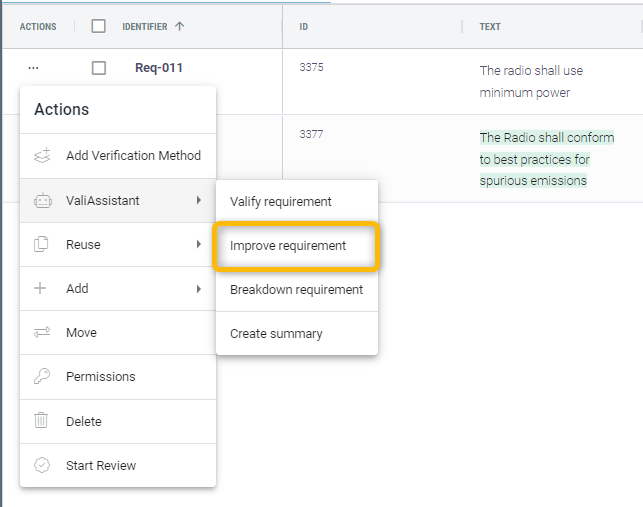
Now you can use the standard provided by Valisassistant prompt to enhance your requirements. As always, these improved requirements can be edited. As you can see in the example below, when using the “Improve Requirement” feature on Req-011 with the INCOSE suggestion, the new requirement text (“The radio shall use a maximum power of 10 watts.”) is now much more precise when compared to the example above. It’s ready to be verified!
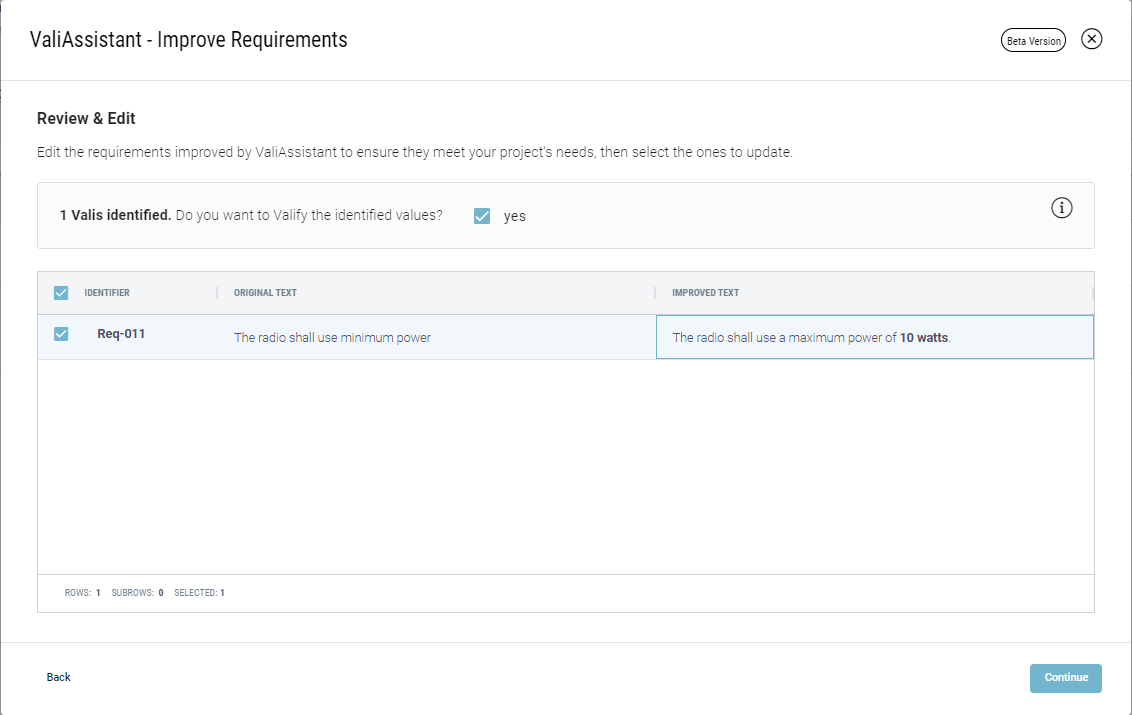
Look for Inconsistencies
Now it’s time for stakeholders of the system of interest to gather and discuss with multiple stakeholders and elicit their needs. Once we gather their needs, we can generate stakeholder requirements. There could be conflicting needs from different stakeholders and similar or duplicated needs from different stakeholders. In these cases, instead of looking for inconsistencies in each and every requirement individually we can also use Valiassistant! Besides finding inconsistencies, Valiassistant will also help you find those ambiguous, non verifiable, contradictory requirements etc within the specification. Check the video below to see this in motion:
